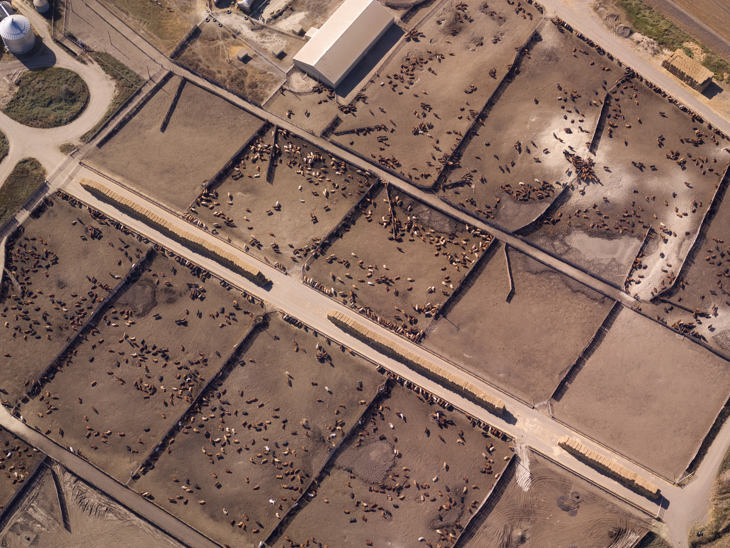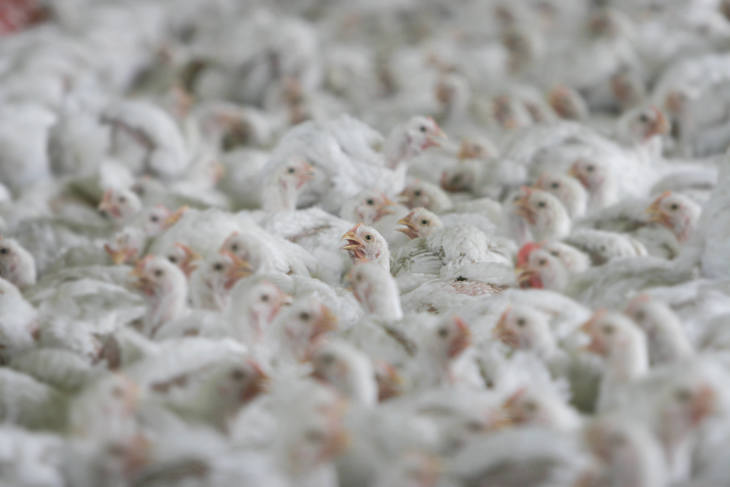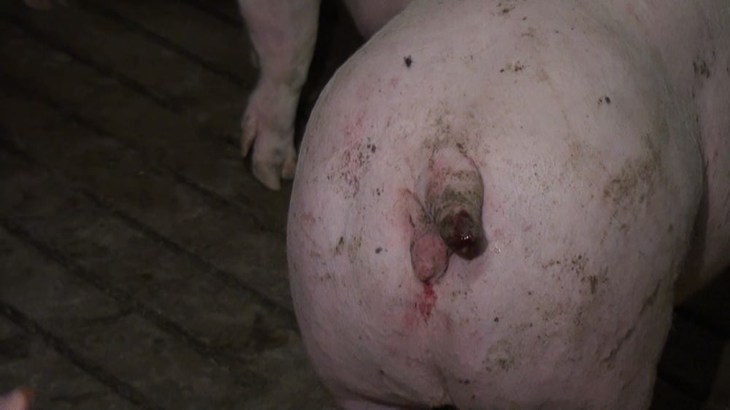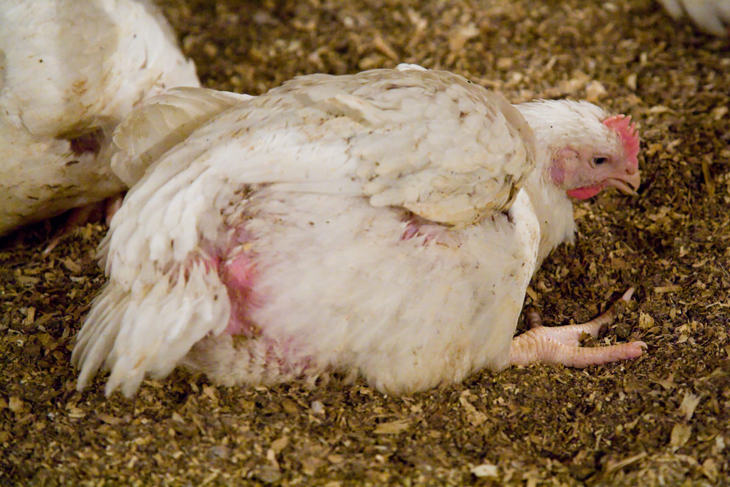Factory farming exploits animals, cramming them together and abusing them in an effort to boost productivity.

The European Union (EU) recognises1 farm animals as sentient beings. Despite this, tens of billions of animals endure short, miserable lives in factory farms2 where the priority is profit above all else.
Space is a luxury

To save space, factory-farmed animals are crammed together in barren pens, crates or cages, preventing normal behaviours such as nesting or foraging. This often causes the animals to inflict injuries on each other out of sheer boredom, frustration and stress3.
An egg-laying hen in a barren battery cage often spends her whole life crammed into a space smaller than an A4 sheet of paper per animal
CIWF (2011)4
Mutilation is commonplace

To reduce these injuries, mutilation has become commonplace. Animals have their teeth clipped, tails docked and beaks trimmed - all usually carried out without pain relief5.
The European Food Safety Authority reported that over 90% of Europe's pigs are tail-docked despite it being illegal to perform routinely.
European Food Safety Authority (EFSA) (2007)6
Fast growth is a necessity

Factory farming systems demand fast-growing or high-yielding animals. They achieve this through selective breeding and the use of concentrated feed. This puts the animals at risk of developing often-painful physiological problems. Lameness, weakened or broken bones, infections and organ failure are common health problems for factory farmed animals. Antibiotics or other growth-promoting treatments are used in some countries to encourage even higher yields*.
Factory farmed meat chickens grow so fast that 25% suffer from painful lameness.
CIWF (2005)7
*The use of antibiotics to promote farm animal growth is outlawed in the EU but legal in a number of countries. In the United States, around 80% of all antibiotics are believed to be used on farm animals8,9.
But don't just take our word for it
…the law alone is not always strong or detailed enough to ensure that [farm animals] have a good quality of life.
Royal Society for the Prevention of Cruelty to Animals (RSPCA) (2011)10
So what?
Factory farming mistreats animals. By taking action against factory farming, we are not just creating a food and farming revolution; we are also helping to stop an inhumane way of producing food that leads to the cruel mistreatment of billions of animals.


